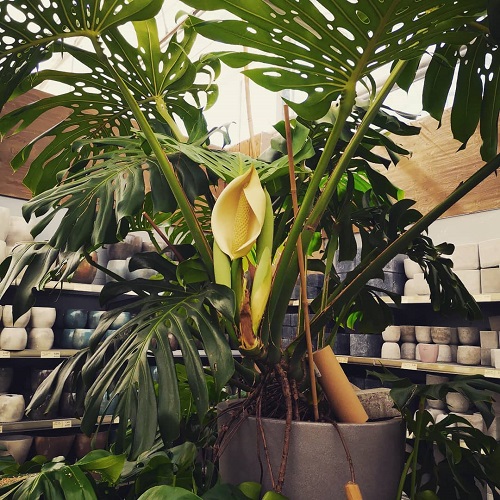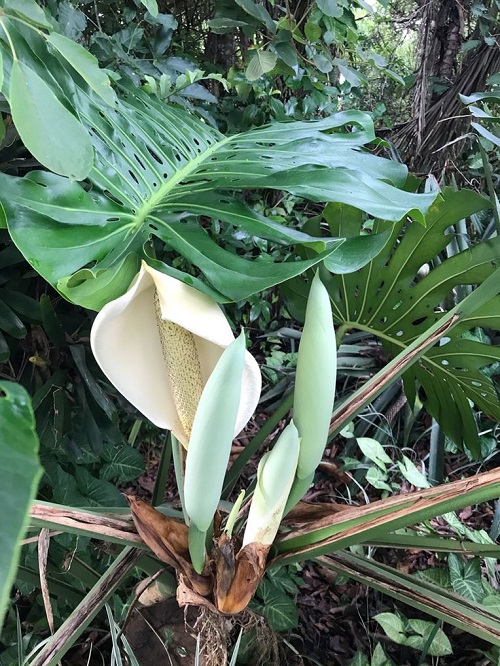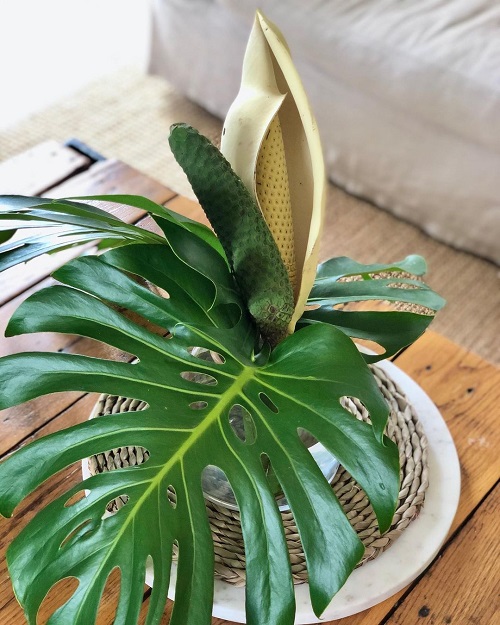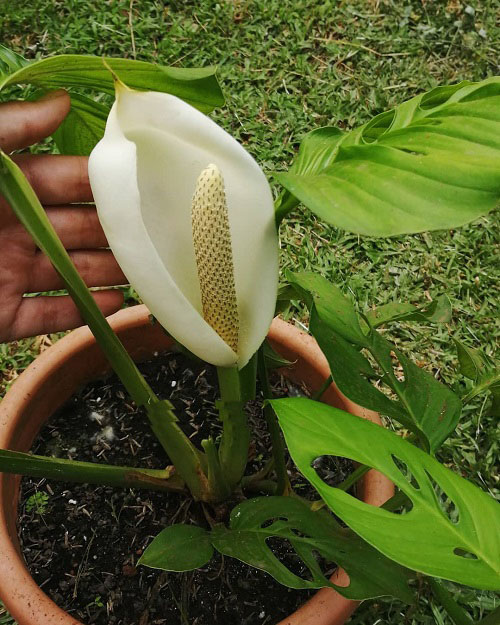Want to know the tricks behind How to Get Your Monstera to Flower? Here are the top tips on making it bloom!

Wondering, How to Get Your Monstera to Flower? Discover the art of coaxing your Monstera plant to bloom as you delve into the intricacies of light, humidity, and proper care.
Learn How to Grow Monstera Deliciosa Fruit here
Do Monsteras Flower?

Yes, Monsteras can indeed flower under the right conditions. While they are primarily grown for their lush foliage, mature Monstera plants have the potential to produce beautiful and unique flowers.
The flowering process is relatively rare and typically requires specific environmental factors such as age, proper care, and adequate light conditions. With the right care and patience, you may be fortunate enough to witness your Monstera’s captivating blooms.
Do Haworthias Flower? Find out here
Monstera Flower Appearance

When a Monstera plant blooms, it creates a special structure called a “spadix” which is a central stalk surrounded by a modified leaf known as a “spathe.” The spathe is pretty cool—it’s large, waxy, and usually green, sometimes with lovely patterns. It’s like the plant’s way of saying, “Hey, look at me!”
Now, the actual flowers themselves are tiny and tucked on the spadix, hidden within the spathe. They’re usually white or cream-colored, adding a touch of elegance to the plant’s lush green foliage. The entire structure measures around 8-10 inches long.
So, when your Monstera decides to flower, get ready for a delightful surprise as it showcases its unique and charming blossoms!
Monstera Flower Fragrance

The flowers of this plant have no scent. The unique and pleasant fragrance often associated with Monstera deliciosa comes from the ripe fruit it produces.
As the fruit matures, it develops a distinctive aroma that is often described as a blend of tropical fruit, pineapple, and banana. However, it’s important to note that the fragrance is associated with the fruit, not the flowers.
Love chocolate? Here are the Best Chocolate Scented Flowers
How Long Do Monstera Plant Blooms Last?
Monstera deliciosa flowers typically last for several weeks, but their longevity can vary depending on various factors. Each individual flower on a Monstera deliciosa plant tends to last for about 2 to 3 weeks. During this time, the flower goes through its blooming phase and gradually fades.
The lifespan of Monstera deliciosa flowers can be influenced by environmental conditions. Factors such as temperature, humidity, light levels, and overall plant health can impact the duration of individual flowers. Optimal growing conditions and appropriate care can help prolong the blooming period.
How Long Do Roses Last? Find Out here!
Do Monstera Plants Die After Flowering?

After a Monstera deliciosa plant flowers, it produces fruits!
- Fruit Development: If the plant has been successfully pollinated, small green fruit may begin to form. These fruit are often referred to as “Monstera deliciosa fruit” or “Swiss cheese fruit.” The fruit starts off small and green and gradually ripens over time.
- Fruit Ripening: As the fruit matures, it undergoes changes in color and texture. It transforms from green to a yellowish hue and develops a rough texture. The fruit becomes softer and emits a distinctive aroma, often described as a blend of tropical fruit, pineapple, and banana.
- Harvesting: Once the Monstera deliciosa fruit reaches its desired ripeness, it can be harvested for consumption.
Here’s everything about how to grow Monstera deliciosa fruit
How to Get a Monstera Plant to Bloom?
1. Get a Mature Specimen
Monstera plants generally need to reach a certain level of maturity before they have the potential to bloom. Younger plants are less likely to produce flowers, so be patient and wait until your Monstera is mature enough.
2. Provide Ample Filtered and Indirect Light
To promote healthy growth and flowering, it’s important to provide Monstera deliciosa with a combination of filtered and indirect light.
Avoid placing the plant in completely dark or heavily shaded areas, and instead, ensure it receives mild sunlight or filtered light for a portion of the day.
3. Monitor the Timing
While there is no specific blooming season in the wild, it tends to happen more frequently during the summer months. The appearance of blooms can vary and may occur anytime between spring and fall, influenced by the local climate.
Keeping track of the plant’s flowering timeline allows you to adjust care accordingly, such as initiating proper feeding and providing increased light exposure 1-2 months prior to its blooming.
4. Consider Outdoor Placement
For optimal blooming, it is recommended to place Monstera deliciosa outdoors in a garden or patio setting. Keeping the plant indoors with low light conditions will not encourage flower development.
Monstera deliciosa thrives in warm environments and benefits from bright indirect daylight, which can be easily provided outdoors.
5. Replicate Its Native Environment
If you reside in a warm tropical or subtropical climate, you have a higher chance of success in growing flowers on your Monstera.
These plants are native to tropical forests, so providing similar growing conditions, such as warm temperatures, high humidity, and ample indirect light, significantly enhances the chances of blooming.
6. Provide Proper Nutrition
Boosting the plant’s nutrient intake can stimulate flowering. It is recommended to feed Monstera deliciosa with a balanced liquid fertilizer, diluted to half strength, at least once every four weeks.
This regular feeding regimen ensures the plant receives essential nutrients to support its growth and encourage blooming.


